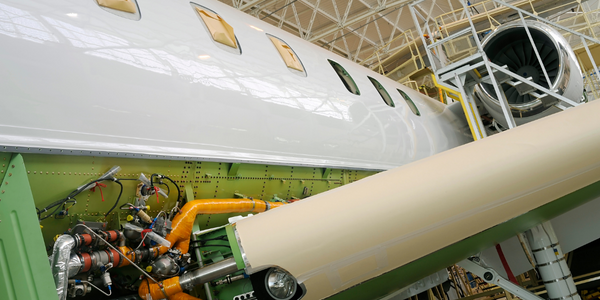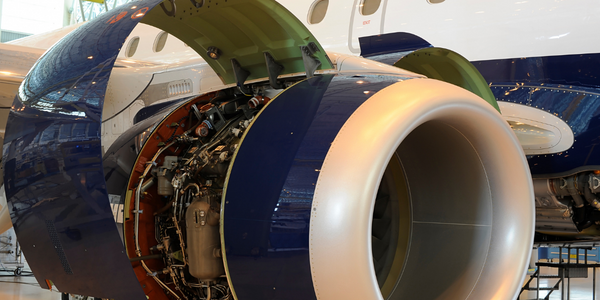Ensuring Meaningful Scientific Research Data from Space
公司规模
1,000+
地区
- Europe
国家
- Germany
产品
- Hazelcast
技术栈
- In-Memory Computing
- Java
- .Net/C#
实施规模
- Enterprise-wide Deployment
影响指标
- Cost Savings
- Customer Satisfaction
- Productivity Improvements
技术
- 分析与建模 - 实时分析
- 应用基础设施与中间件 - 数据交换与集成
- 平台即服务 (PaaS) - 数据管理平台
适用行业
- 航天
适用功能
- 产品研发
- 质量保证
用例
- 远程协作
- 远程控制
服务
- 软件设计与工程服务
- 系统集成
关于客户
Airbus is an international pioneer and leader in the aerospace industry. Airbus designs, manufactures, and delivers aerospace products, services, and solutions to customers around the world. The Airbus Defence and Space division works on several exciting space projects. One of them is the sounding rocket program TEXUS (Technische Experimente unter Schwerelosigkeit, Technical Experiments in Microgravity) for microgravity research. TEXUS is funded by the German Aerospace Center (Deutsches Zentrum für Luft- und Raumfahrt e.V., or DLR) on behalf of the German government and has been operational since 1977. More than 70 TEXUS missions (including variants) have been carried out at the ESRANGE (European Space and Sounding Rocket Range) space center in Kiruna so far. With an apogee of 250 km, a TEXUS mission provides about 6 minutes of experiment time under microgravity conditions. The MiniTEXUS and MAXUS mission variants are characterized by lower respectively higher apogees and shorter respectively longer microgravity durations. Since the TEXUS mission 6 ESA (European Space Agency) joined the TEXUS program as an important customer for scientific payloads and has funded all MAXUS missions.
挑战
Running experiments and collecting data on sounding rockets is a fine-tuned process, and part of that process entails making adjustments to experiments along the way. For the FLUMIAS payload, scientists need to make sure that captured images are in focus to provide the most value to all stakeholders. And for any given mission, there are usually distinct teams of scientists running experiments, so the system needs to switch between these different experiments to visualize the images and data relevant for the respective teams, enabling them make the appropriate adjustments. The Airbus Defence and Space software engineering team sought a technology that was easy to understand and could fit within their infrastructural requirements. While there were many potential candidates in the market, it was uncommon to find one that had a suitable programming model with solid documentation. They didn’t have the time to get up to speed on unnecessarily complex systems. And with all the other mission support activities that they were responsible for, the team didn’t necessarily have the time to do extensive research to find an ideal technology.
解决方案
The software engineering team knew what they needed in a technology, and when they read about Hazelcast in a developer-oriented website, it seemed like a great fit. As an in-memory computing platform, Hazelcast is designed for extremely high throughput and low latency environments, though the key benefit for Airbus was the ease of use as a data management platform. The Hazelcast interface offered support for distributed data types that are very familiar to software engineers, so there was no steep learning curve to overcome. This made Hazelcast easy to integrate into the ground infrastructure for sounding rocket systems. The fact that the software was well-documented also contributed to the ease of use. Another key design principle of Hazelcast is architectural simplicity, so it can be run in any environment, including those with small hardware footprints, and embedded in applications without any external dependencies that can add bloat to a system. The in-memory model helped reduce complexity by removing a direct dependency on hard drive accesses. The distributed architecture offers fast access to data from any of the nodes, or from any client machine connecting to the Hazelcast cluster. Another requirement for Airbus was cross-platform support. They worked with Java, but part of the system had to interact with .Net/C#, so support for both environments, as well as other programming languages, made Hazelcast appealing.
运营影响
数量效益

Case Study missing?
Start adding your own!
Register with your work email and create a new case study profile for your business.
相关案例.

Case Study
Airbus Soars with Wearable Technology
Building an Airbus aircraft involves complex manufacturing processes consisting of thousands of moving parts. Speed and accuracy are critical to business and competitive advantage. Improvements in both would have high impact on Airbus’ bottom line. Airbus wanted to help operators reduce the complexity of assembling cabin seats and decrease the time required to complete this task.

Case Study
Aircraft Predictive Maintenance and Workflow Optimization
First, aircraft manufacturer have trouble monitoring the health of aircraft systems with health prognostics and deliver predictive maintenance insights. Second, aircraft manufacturer wants a solution that can provide an in-context advisory and align job assignments to match technician experience and expertise.

Case Study
Aerospace & Defense Case Study Airbus
For the development of its new wide-body aircraft, Airbus needed to ensure quality and consistency across all internal and external stakeholders. Airbus had many challenges including a very aggressive development schedule and the need to ramp up production quickly to satisfy their delivery commitments. The lack of communication extended design time and introduced errors that drove up costs.

Case Study
Developing Smart Tools for the Airbus Factory
Manufacturing and assembly of aircraft, which involves tens of thousands of steps that must be followed by the operators, and a single mistake in the process could cost hundreds of thousands of dollars to fix, makes the room for error very small.

Case Study
Accelerate Production for Spirit AeroSystems
The manufacture and assembly of massive fuselage assemblies and other large structures generates a river of data. In fact, the bill of materials for a single fuselage alone can be millions of rows of data. In-house production processes and testing, as well as other manufacturers and customers created data flows that overwhelmed previous processes and information systems. Spirit’s customer base had grown substantially since their 2005 divestiture from Boeing, resulting in a $41 billion backlog of orders to fill. To address this backlog, meet increased customer demands and minimize additional capital investment, the company needed a way to improve throughput in the existing operational footprint. Spirit had a requirement from customers to increase fuselage production by 30%. To accomplish this goal, Spirit needed real-time information on its value chain and workflow. However, the two terabytes of data being pulled from their SAP ECC was unmanageable and overloaded their business warehouse. It had become time-consuming and difficult to pull aggregate data, disaggregate it for the needed information and then reassemble to create a report. During the 6-8 hours it took to build a report, another work shift (they run three per day) would have already taken place, thus the report content was out-of-date before it was ever delivered. As a result, supervisors often had to rely on manual efforts to provide charts, reports and analysis.



